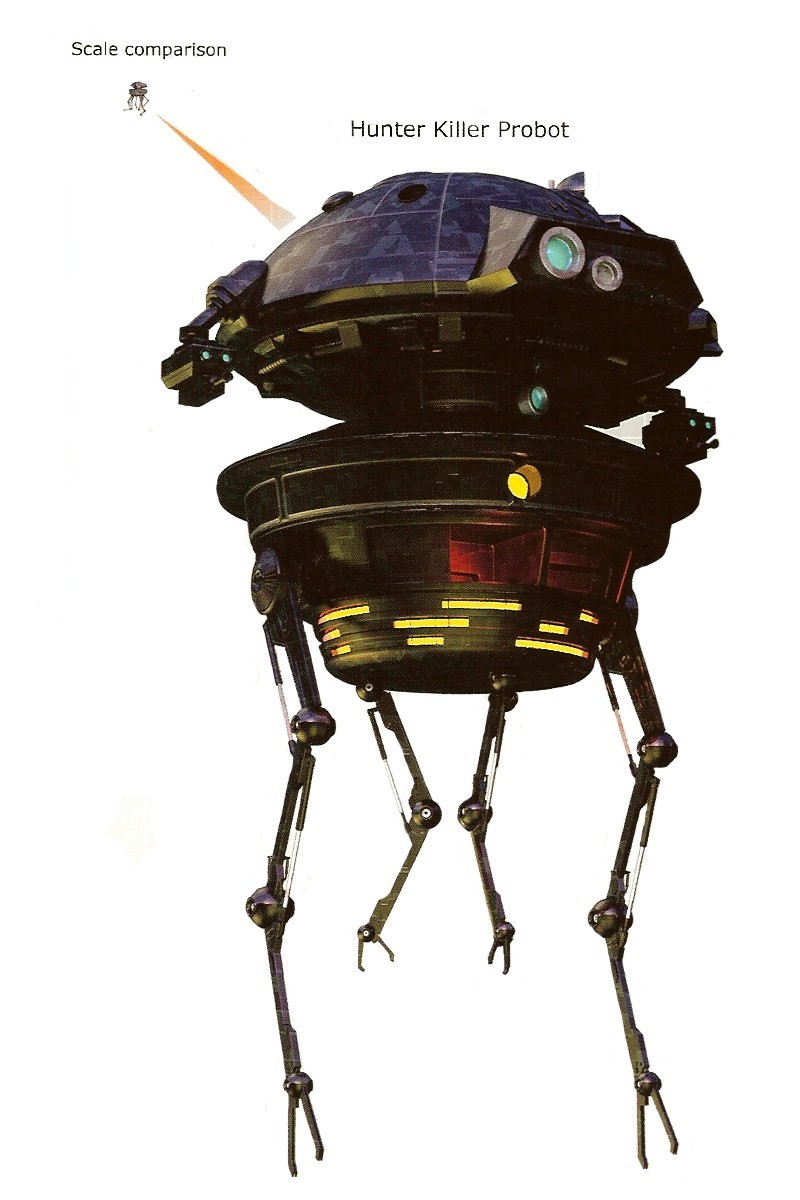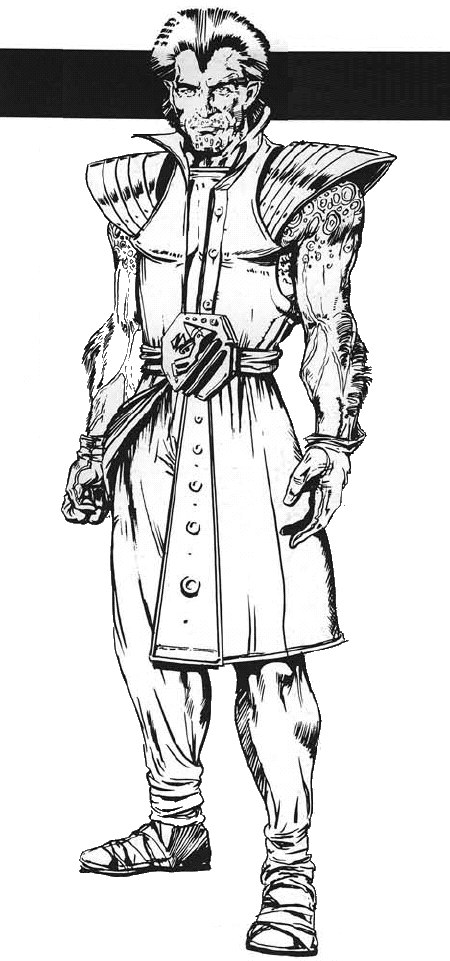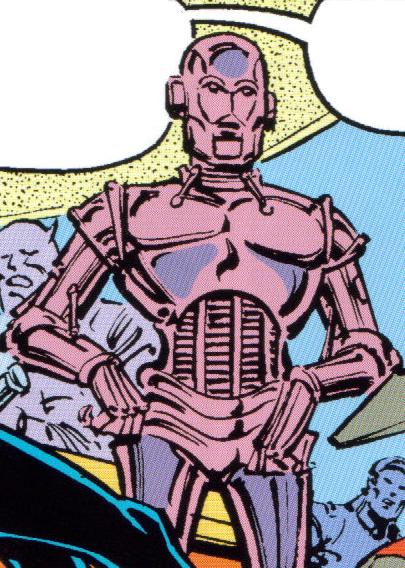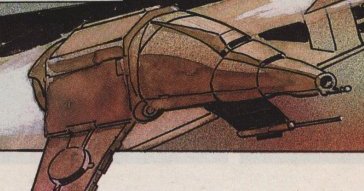Cinematic Feats In D6 Star Wars
This feat system is my attempt to add a bit of cinematic spice to the D6 system of skills and attributes. The skill system is great for letting characters know their limits, and what they are good at, but in the movies, sometimes characters just do things. They don't know how they possibly could have pulled it off, but they did.
Rules for taking a feat
After a character has 10 character points, he can choose to take a feat. Choosing a feat will cost him 5 character points. Most feats have skill and attribute requirements; the skill must be there, or the character cannot take it. Each high-level character should have access to one or a few feats. They speed up and simplify game play, and make it more cinematic, as the outcome is based on the roll of a single die, as opposed to 4D+2.
The role of the feat in the game system
When a character spends the points to gain a feat, he has the first level of that feat. That means, whenever he wants to perform that feat, he must make a 1D roll. A roll of a 6 is an automatic amazing success, and 1 is automatic disastrous failure. So as a level one, the character must roll a five or a six to make the feat check. This doesn't sound too great, but the feat gets much better for every five character points awarded, if the character has used the feat, or its related skill, the character gets another feat level, without having to spend the points. So a feat success chart would read like this:
* First level feat: succeeds 5,6; fails 1,2,3,4.
* Second level feat: succeeds 4,5,6; fails 1,2,3.
* Third level feat: succeeds 3,4,5,6; fails 1,2.
* Fourth level feat: succeeds 2,3,4,5,6; fails 1.
Fourth level feats are only achieved by the most skilled people in the galaxy, due to the sheer number of character points it requires. But with a first level feat, you still have a 1/3 chance of success! Characters can take any number of feats they wish, but they are expensive, as each new feat costs 5 more character points. As a general rule, feats may be taken if the character has a specialization in the skill required, but may only apply that feat to the specialization. Ex: The character wants to take Quick Draw, which requires Blaster or Firearm of 6D, but the character only has Blaster: DL-44 Heavy Blaster 6D. He may take quick draw, but is only able to perform it when drawing a Blastech DL-44.
Sample Feats
Called Shot
Requires: Blaster, Bowcaster, Firearms, Starship Gunnery, or Vehicle Blasters 6D, Perception 2D+1
This feat allows the character to make a shot that is seemingly impossible to make. It often involves blowing off a hand, or head, or targeting a small creature in a canyon. This skill can also be taken for Vehicle Blasters, Starship Gunnery, or Cap. Ship Gunnery. They are not different feats, but to apply the feat to that skill, you must have at least 6D in that skill. Ex: Called shot can be applied to Vehicle Blasters, but you must have 6D in Vehicle Blasters. This feat, if successful, applies all damage to the part of the target called, meaning, in effect, the hit does character scale damage on a target of much smaller scale, increasing damage, and decreasing resistance. Called shot can be applied to any ranged weapon skill, including Firearms, Bowcaster, Vehicle Blasters, or Starship Gunnery. Only one instance of the skill need be taken, but the character must have at least 6D in the requisite skill to use the feat.
Scrounging
Requires: Streetwise 4D, Bureaucracy 4D, Business 4D
This feat allows the character to find or trade for helpful supplies in any situation. This is especially helpful for military units, when scrounging is much preferred to filling out endless requisitions forms, and waiting for months for the requisite part. The higher the level of the feat, the better the character is at it. Fourth-level people are likely to come up with three cases of Whyren's Reserve whiskey on a liquor-free planet, or find three fully loaded X-Wings in the Imperial Palace on Coruscant.
Adrenaline Burst
Requires: Stamina 5D, Strength 2D+1
Did you ever hear about the guy who saved a child by lifting a landspeeder off of him? This was the feat he used. Sometimes regular people do superhuman things, without any means of explaining it. The best fighters and toughs know how to exploit the energy that runs through their body into one explosive burst. Using this, they can run faster, and farther, jump higher, and longer, and hit harder than anyone should be able to. This feat, if a success, adds 15 points to any roll involving strength, or dexterity-related rolls.
Power Strike
Requires: Martial Arts 4D, Strength 2D+1, Dexterity 2D+1
These are the guys that break through bricks: 30 of them. They have learned to utilize physics in their favor, and deliver incredibly damaging blows with fists, feet, and other wielded weapons. Breaking bones with a single strike is all in a day's work for these people. This feat, if a success, adds damage equal to the level of the feat to any strike using melee combat, martial arts, or brawling. For example, a fighter who uses his second level power strike feat to attack with his knife may add 2D to the damage if he successfully hits. (This damage ignores maximum damage numbers given for melee weapons.)
Practical Application
Requires: Scholar 6D, Knowledge 2D+1
This feat allows the character to apply his theoretical knowledge of physics, chemistry, whatever into practical application. Think MacGuyver. Someone with practical application can use their knowledge of physics to launch a rocket into a decaying earth orbit, and land right on top of an enemy halfway around the globe. Theoretically. A character that specializes in a Scholar field may still take this feat, but he can only use it to apply his specialty. Ex: Ryke has Scholar: Chemistry 6D, so he can take the feat, but can only apply it to situations involving chemistry. This feat, if a success, adds dice equal to the level of the feat to any other skill. Ex: MacGuyver wants to use his 4th level Practical Application feat to make a thermonuclear device out of a ballpoint pen and the chewing gum in his mouth. He rolls his feat, succeeds, and is therefore able to add +4D to his Thermonuclear Weapon Repair skill roll.
Animal Friendship
Requires: Beast-Riding 6D, Perception 2D+1
This feat intimately connects the animal to the character. He can, through knowledge of common body positions and other clues, discern the feelings of an animal, and is well versed in how to get it to do what he wants. To an outsider, this may seem like telepathy, but the character sees it as merely seeing the obvious. This feat has multiple effects. First, it eliminates the need to make a beast-riding roll for riding any animal with orneriness < 3D. Second, if the character makes the feat roll, he has charmed (or coaxed) the animal into doing most of his wishes. If a character has a beast riding specialty 6D, then he may only apply his feat to that species, and those closely related. Ex: a character has Beast Riding: Tauntauns 6D, and so he needn't make a check to ride it if he takes the feat. In addition, the Tanta, closely related to the Tauntaun, is also easily taken in by his charms.
Aerobatics
Requires: Jumping 4D, Dexterity 2D+1, Perception 2D+1
This feat allows you to do wondrous things while tumbling through the air. First, Acrobatics reduces the falling damage by one level for each level of the feat the character has, according to the chart below:Distance Fallen (in meters) Damage
3-6 2D
7-12 3D
13-18 4D
19-30 5D
31-50 7D
50+ 9D
At the third level of this feat, the character can determine exactly where he wants to land within a two-meter radius. If the character rolls a six, he lands in exactly the right spot, if he rolls a one; he lands in the most unfortunate place possible. (GMs, have fun!) For example, if a character jumps off a building, attempting to land on the roof of a speeder, he lands right in front of it.
At the fourth level of this feat, the character gains the ability to perform actions in the air, at a -1D penalty. The character needn't roll to achieve this feat; he is automatically capable of performing actions. Ex: The character wishes to jump off the roof of a building, and rescue a falling child. He must roll his feat to jump, and if he's successful, he can roll his dexterity to determine whether he catches her.
Quick Draw
Requires: Blaster or Firearms 6D, Dexterity 2D+1, Perception 2D+1
This feat allows the character to make the fabled quick draw of the gunslinger. The character that takes this feat may, if successful, draw and fire with no action penalty. In addition, the target of the Quick Draw may not dodge. This does not, however, mean that the target is automatically hit. After succeeding in the quick draw skill, the character must roll Blaster as normal, but no penalties are incurred for drawing in the same round. This feat also allows the character to participate in a gunfight with another who has this skill. Both characters roll D6, and then add a number of points equal to their level in Quick Draw. Whoever has the highest score is the one who shot first. The first shooter then rolls his Blaster skill. If the first shooter hits, the duel is over, and the loser takes his damage. If the first shooter shooter totally misses, then the second shooter may shoot, to determine whether he hits. If he hits, then he is the winner. If no one hits, it degenerates into all-out combat, reverting to standard D6 combat rules.
Silent Running
Requires: Sneak 6D, Running 5D, Perception 2D+1
This feat allows the character to move much faster while sneaking. Essentially, they may sneak all the way up to an all out run, utilizing their full range of movement, with no penalty whatsoever to their move rolls. This skill is pretty rare, and it may be that the GM only wishes to grant it to those who have studied combat for a long time, or perhaps have learned it from a master. Or maybe, if the characters abuse the power, a convenient twig could find its way onto their path.
|











